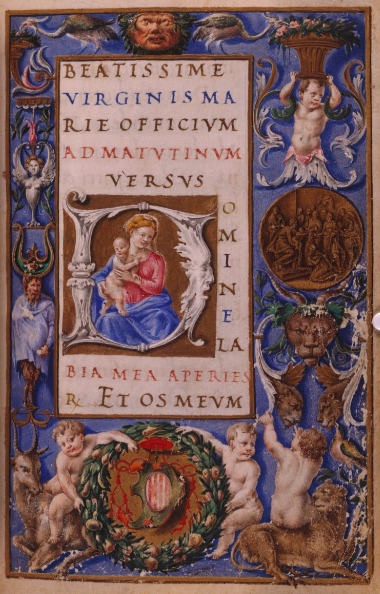Now that the Morgan Library MS block is complete for now, I've added a British book, one with quite an impressive history, British Library Add MS 50001. This use of Sarum book was owned by Queen Elizabeth, wife of Henry VII, and is actually inscribed to her on f.22r, "Elysabeth y[e] queene". The manuscript is a bit of a mess, it was rebound by the BL recently and digitized un the unbound state.
The calendar is very complicated. There are many of the liturgical notes in the margins (the Keys of Easter, extremities of Advent, etc) and the Zodiac dates. These are in blue ink, which is not elsewhere used in the calendar, excluding a single saint in August, until December, when they appear frequently, apparently used as a middle rank. Many of the usual "Henry VIII" editorials are visible, 'pp' or 'ppe' erased and the feasts of Thomas Becket (dec 29th and July 7), struck through entirely. The most interesting things about the calendar, however, are the mistakes. In the month of August(see f.4v below), all of the entries in black ink, up to St. Rufus on the 27th are one day too early, however the red entries are accurate. This suggests a phased approach to the scribe, with all of the black entries writted apart from the red ones, and perhaps that the black ones were done first.
And on a project note, this is the 100th Book of Hours to be entered in the DB!
(DB Id: 186)
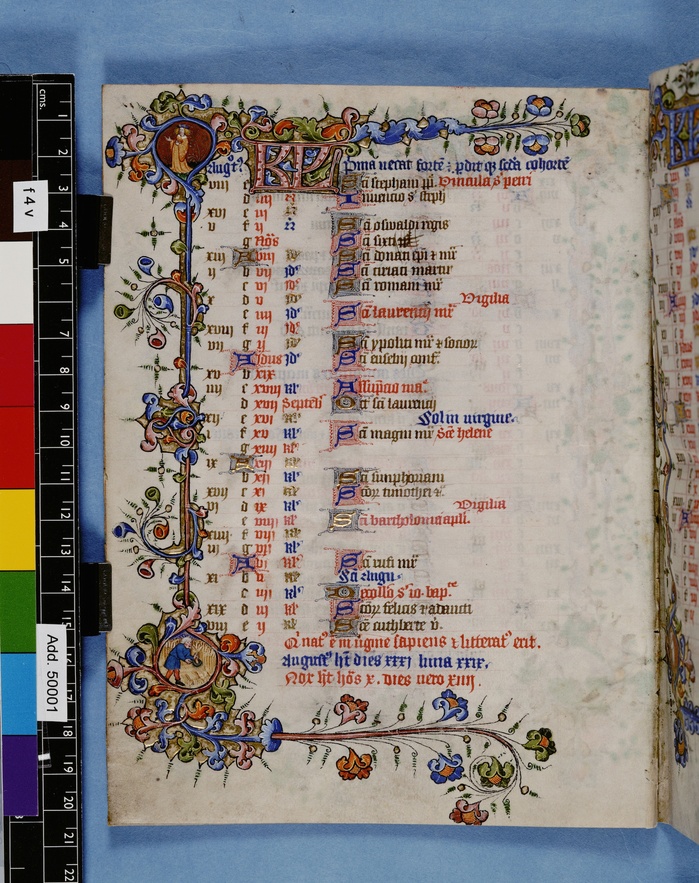
British Library Royal MS 2 A XVIII is a lovely Sarum use book, and the most entertainingly Tudor book possible. In addition to all of the relevant English saints, Edward the Confessor, Cuthbert and Etheldreda, there is the erasure of ALL references to Thomas Becket (see his Octave on f.28r) and even the title 'pape' has been removed where possible. The margins are filled with later notes about the goings-on with the royal household: "her decessed queene katerine", and "this day king harry the viith wedded the queen Elisabeth..."
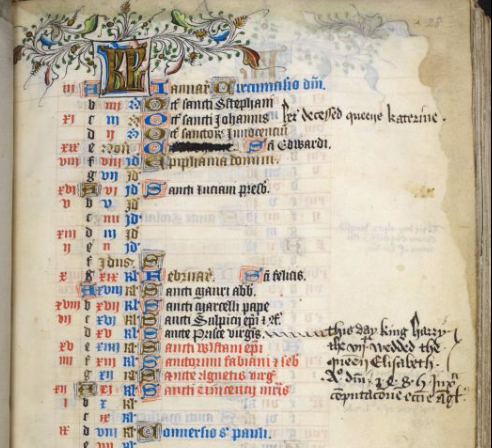
British Library Yates Thompson 29, known asthe 'Hours of Bonaparte Ghislieri', formerly known as 'The Albani Hours', is a lovely Humanistic Use of Rome book, from Bologna, about 1500. The calendar is decorated with the expected foliage and cameos, and the bottom of the first page of each month has an "important" saint, though not always one realated to the month. There's an interesting error in the months of May and June, may is incorrectly written with 30 days, ending with a dominical letter of 'c' (see f.5v below), which would have been right for May 30th. Either as an intentional correction or, more likely, as an error from the same cause, June has 31 days, and starts with dominical letter 'd'. The saint on the second line of June, however, is a correct saint for June 1, and the rest of the month continues in the same manner. There is no evidence for this practice, but if one were copying from a non-paginated calendar, this mistake would be easily possible
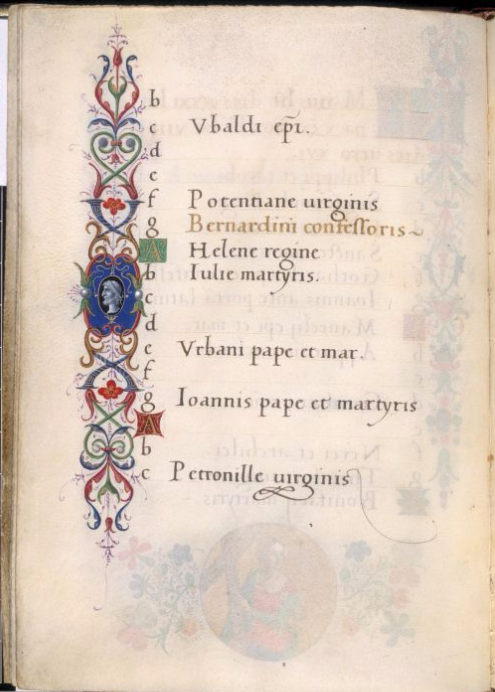
British Library Add MS 35313, known as the London Rothschild Hours, is another Flemish book of hours, this one probably made for a member of the Spanish court in the Netherlands. The complete calendar consists of only 6 folios, with one month per side. The decoration scheme is comprehensive, with the sign of the Zodiac at top, the labor of the month at bottom, and architectural roundels the full height of the outer edge representing the saints of the month. On the side of December, f.7r below, you can see the Nativity, the deaths of St. Thomas Becket and St. Stephen and a cephalophoric saint, among others. The calendar is interesting due to the large number of unusual saints, roughly 60, who were unmatched and their prevelance in March and April.
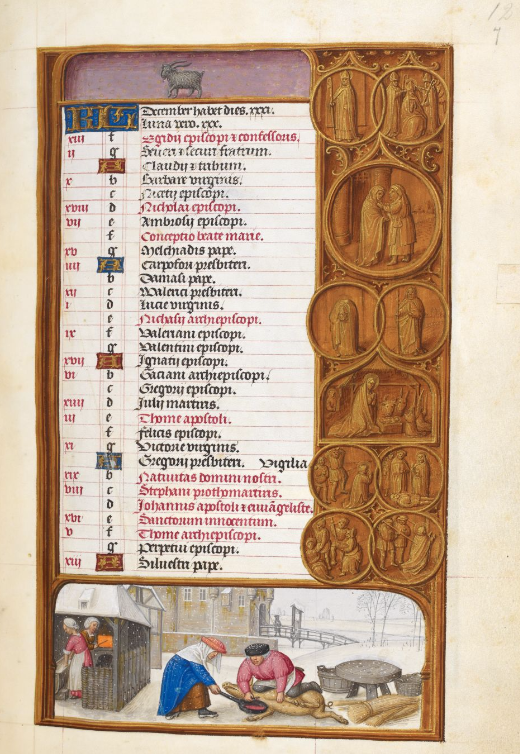
The Hastings Hours, or MS Add 54782, is a Use of Sarum book held by the British Library. Though the calendar is somewhat undistinguished, some attribute the decoration scheme to Alexander Bening, father of the great 16th Century painter Simon. Though use of Sarum for th British market, it was made in Flanders and the calendar has not yet been localized. The Mass of St. Gregory, with it's illusionistic borders and halucinatory arma christi, from f.18v is reproduced below
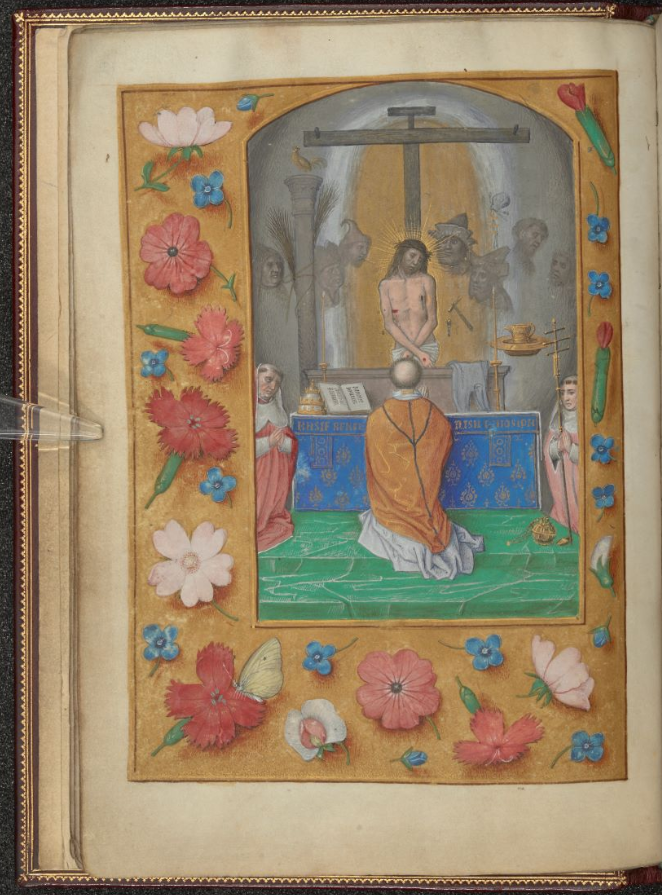
British Library MS Add 20927 is a lovely Sanvito MS, though f.6r and f.9r are swapped on the digitized version. The calendar has an interesting entry for November 2, rather than All Souls, it has Saint Iusti (Martyr).
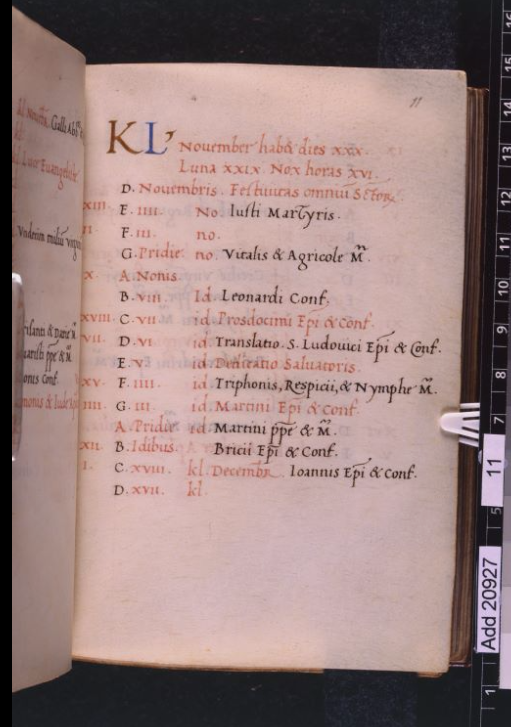
Later on are the Ala Antica full-page decorations (f.14r)
